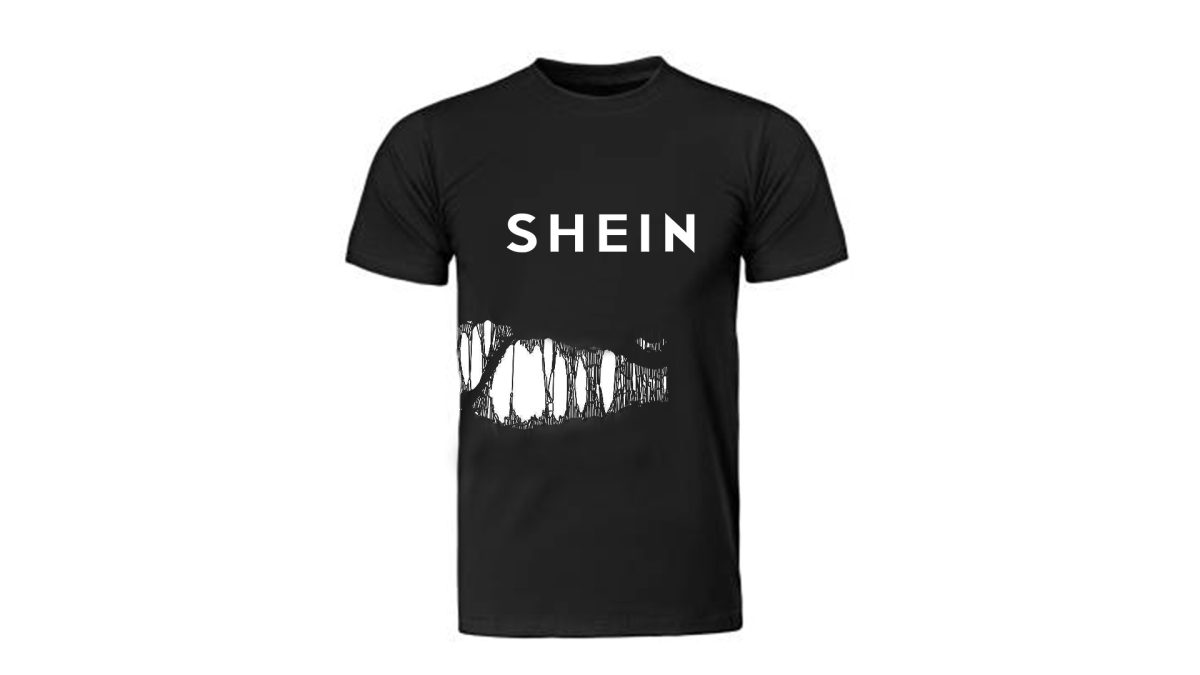Shein, a fast fashion giant festered with unethical labor practices and environmental citations, has the internet in a chokehold for online shopping. Recently, a Shein truck was parked on Fifth Avenue for their “College Tour.” The brand offers unparalleled low prices to their consumer base that targets tweens, teenagers and young adults on a conscious budget. However, there is nothing conscious about their business model. The company’s practices especially raise concern over human rights and environmental issues.
“Fast” fashion companies like Shein, Romwe, Fashion Nova and AliExpress rely on exploited labor. This means that workers in the fast fashion industry are subjected to extreme working conditions, low wages and long hours. According to a report from Private Eye, Shein manufacturing locations break Chinese labor laws with workers exceeding 75 hours a week. Many of these workers do not have contracts or wage agreements either, allowing further exploitation. Additionally, the report cites a lack of emergency exits, barred windows and insufficient egress routes for workers, as large bags of clothing block stairways and halls. Videos and pictures of Shein clothing tags with help messages allegedly scrawled on them by factory workers went viral on TikTok in June 2022. Faced with immense scrutiny and pressure, Shein curiously claimed the “need your help” message was to “prompt customers to remember to utilize a fabric softener during the garment’s washing process in order to make the fabric softer.”
According to the United Nations Economic Commission for Europe, global clothing production doubled between 2000 and 2014. During this time, the average consumer was purchasing 60% more than before. Even more alarming is an increase in “throwaway culture” — items are worn seven to ten times before being tossed. Every year, America discards 34 billion pounds of textile waste.
For Americans, tossing clothes is an “out of sight, out of mind” thing. But for many people, specifically people in the global south, this discarded clothing is quite literally “in sight, on the mind.” It’s impossible to miss.
Take Chile’s Atacama Desert, for example. Here, thousands of tons of nonbiodegradable clothes — remember, they’re synthetic — fill the desert. You can see it from space. One of Earth’s most beautiful environments, the driest desert on the planet has become a landfill for tossed fast fashion textiles. Because they’re mass-produced with cheap, synthetic fibers, these clothes don’t last past a few washes and don’t biodegrade. They sit for eternity, sometimes catching fire and releasing noxious fumes and black smoke in the air.
It’s not just Chile, either. At a dump in Accra, Ghana, the accumulation of clothes and other mass-produced Western goods rises over 65 feet high. This waste directly affects the livelihood of Chileans, Ghanaians, Kenyans and many other societies who shoulder the brunt of the ecological load — the price of rampant Western consumerism.
However, a great deal of damage is done before the items are inevitably discarded. The creation of these clothes is extremely depleting to the environment. The fast fashion industry is the third-largest polluter on the planet, expelling 1.43 billion tons of carbon dioxide yearly, contributing 10% of annual greenhouse gas emissions.
Synthetic fibers, which make up 69% of today’s textiles, are created from ever-depleting fossil fuels like gas and oil, according to a report by Synthetics Anonymous. For context, the report adds that the creation of synthetic fibers consumes more oil than Spain annually. Additionally, the dyeing and washing of fast fashion garments pollutes waterways with over 1,900 chemicals annually, affecting the health of aquatic flora and fauna. Post-transaction, the washing of these synthetic materials breaks down atomic bonds and releases microplastics into our marine environments. Research shows that the washing of these textiles contributes 35% of the microplastics around the world in shoreline habitats, the sea surface, Arctic ice and even drinking water. Our seafood has microplastics, too.
Shein manages to sanitize its image with milquetoast responses and aggressive marketing to Gen Z. Spending over $34 million on advertisements across a myriad of platforms, Shein’s most effective marketing strategy is its capitalization on haul culture. On TikTok, brand ambassadors and social media influencers try on each piece from the obscene bounty they order from a given company in exchange for money, known as a “haul.” These videos have racked up over 4.5 billion streams on TikTok with the hashtag #sheinhaul.
These influencers promote Shein’s dizzying variety of styles — Shein added between 2,000-10,000 styles on a given day in 2022. With these videos come the discounts and referral codes from the influencers. These codes prey on money-conscious young adults, predominantly girls. This is why it was disappointing for me to see Shein gallivanting across the country on their “college tour,” peddling more mass-produced crap — this time for dorms.
This blatant presentation, and promotion from the Pitt’s Graduate School of Public and International Affairs TikTok, reinforces the privilege we have as American students and highlights the cognitive dissonance of people who claim to “care about the environment.” Buying a “Save the Earth” shirt and tree poster from Shein won’t help.
Is there a way to derail this seemingly terminal fast fashion train? We college students can start by evaluating the frequency of our purchasing habits, the real “need” of that new item, the quality of said item and its stage in the “clothing life cycle” — is it thriftable? Can it be repurposed? It’s a conscious and sometimes financially difficult choice to resist fast fashion, but when thinking outside yourself, it’s really a no-brainer.
Jake Vasilias writes mostly about the environment and sports. Write to him at [email protected]


